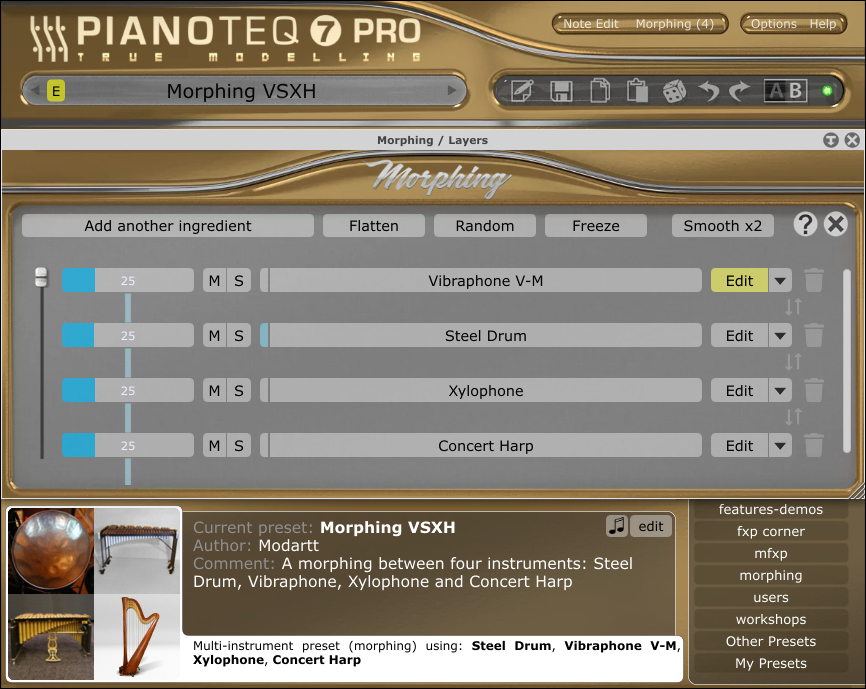Pianoteq 7 is here and now you can create new instruments like never before
Modartt has released version 7 of its popular piano modelling instrument, Pianoteq, and adds layering and morphing functionality to help you create new instruments like never before.
The much-requested features are also joined by a new grand piano and improvements to the physical model which adds double polarization.
The new Layering feature allows you to play an instrument in the lower range and another in the higher range, then blending the two in the middle range. And while mixing several sounds together will prove popular among existing Pianoteq users, it is perhaps the new Morphing feature that will really get those creative juices flowing.
The Morphing feature differs from the new Layering functionality as it affords the user to create entirely new instruments, utilising Pianoteq’s powerful modelling technology.
Instead of mixing just the sounds, morphing is performed at the modelling level so it’s the instruments’ physics itself that is manipulated.

Version 7 of Pianoteq also gains refinement in the physical modelling engine with the addition of double polarization. String vibrations are now modelled in any direction, be that parallel, or perpendicular to the soundboard allowing for even more complex and better-sounding tones.
This greatly improves the duration of sustain more in line with acoustic pianos and will feature in all models available.
To round off this significant update is the inclusion of a brand new modelled piano in the form of the Model D Spirio|r, recorded at the famous New York Steinway Hall.
Prices for Pianoteq 7 are as follows:
- Pianoteq Stage (€129 / $149)
- Pianoteq Standard (€249 / $299), includes the morphing and layering tools
- Pianoteq Pro (€369 / $449), same as Standard but also includes note-by-note editing of parameters
More information and pricing can be found on the Modartt website.
Want all the hottest music and gear news, reviews, deals, features and more, direct to your inbox? Sign up here.